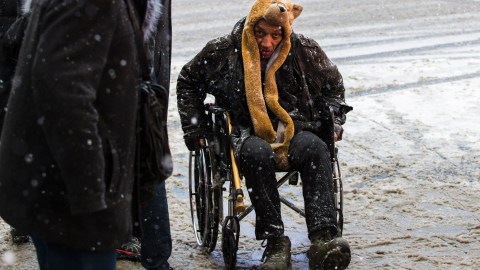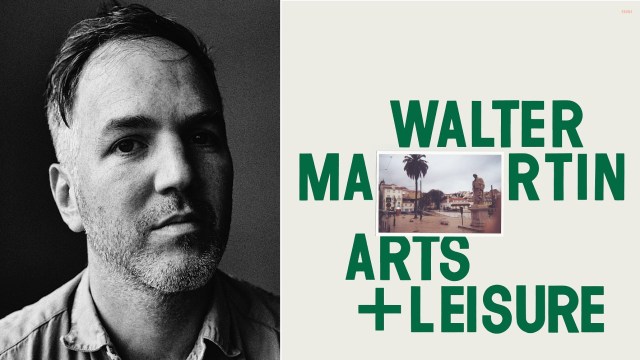When snowfall stops a city, the disabled get forgotten

Photo credit: EDUARDO MUNOZ ALVAREZ / AFP / Getty Images
Cities and local municipalities responding to heavy snowfall can help citizens in wheelchairs by adjusting their snow-removal policies, writes Aria Bendix at CityLab.
2016’s Mid-Atlantic blizzard — Snowzilla, to those casually familiar — rekindled concerns about civic policies that prioritize the clearing of roads at the expense of sidewalks. When plows push snow out of the driving lanes, the resulting pile often blocks the curb cuts that wheelchair users depend on to cross the street.
Although it makes sense to prioritize clearing roads over sidewalks (commerce and emergency vehicles require one, not the other), that doesn’t mean the infrastructure upon which most disabled citizens depend should be forgotten. Unfortunately, this is too often the case:
Disabled citizens also suffer from policies that preclude plows from clearing alleys or approaches to alleys. In her article, Bendix interviewed several wheelchair users who say they become stuck inside for weeks at a time because their homes are only accessible via ramps in inaccessible areas.
For those who do manage to make it to the sidewalks, the trek is often a perilous one. That’s because the responsibility for clearing snow from neighborhood and commercial sidewalks falls on the owner of the adjacent house or business. Non-shovelers are supposed to be fined for their negligence, yet cities rarely dedicate the necessary resources to police them. Without threat of financial penalty, there is very little incentive for lousy neighbors to clear their walks. This leads to impassible stretches of sidewalk that pose considerable danger to the able and disabled alike.
How can cities do better? Edith Prentiss, the head of New York-based civil rights organization Disabled in Action, tells Bendix that the solution is tripartite. First, hold people accountable for not following the rules. Second, educate the populace about their rights and responsibilities in times of extreme weather. Finally, city agencies should prioritize hiring people to represent the disabled community. It’s much harder to shun people in wheelchairs when prominent city staff members use wheelchairs.
Of these, the second is probably the most vital. If more people understood how winter weather affects the disabled, it’s likely that more robust assistance efforts would be enacted. Cities could also help organize volunteer groups and promote private nonprofits that specialize in helping the disabled during winter storms.
The pie-in-the-sky scenario is for cities to better prioritize the needs of those who are most seriously affected by snow-removal policies. The more probable result is that neighborliness and altruism pick up the slack.
—
Robert Montenegro is a writer and dramaturg who regularly contributes to Big Think and Crooked Scoreboard. He lives in Washington DC and is a graduate of Loyola Marymount University in Los Angeles.
Twitter: @Monteneggroll. Website: robertmontenegro.com.




